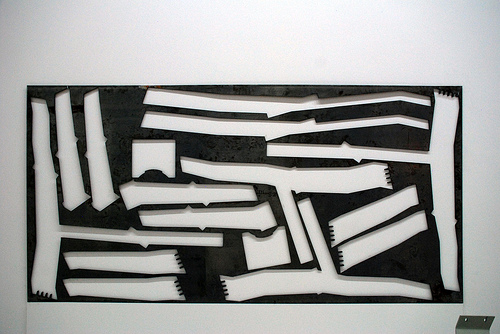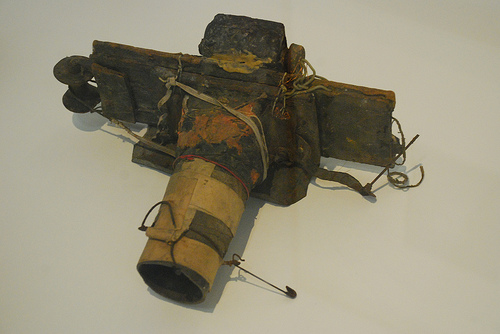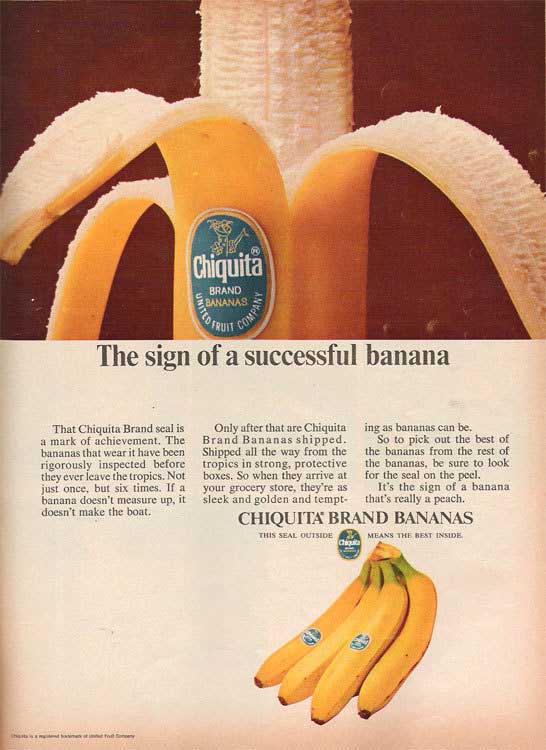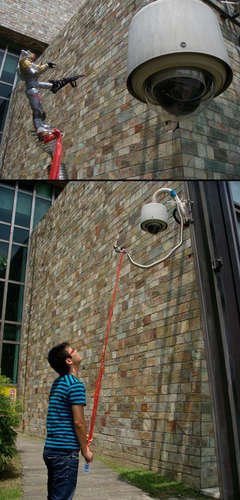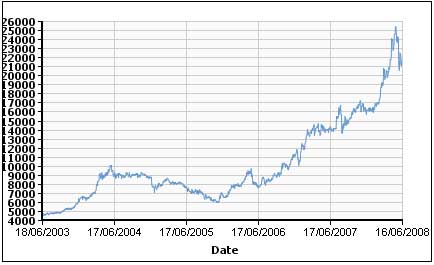I’ve covered Kram/Weisshar‘s Breeding Tables before, and they’re now available for sale at Moroso. I was finally able to see them up close – including process documentation and parts splayed out – at the Pompidou center a couple of weeks ago. To recap, the tables are generated using a genetic algorithm; its parts are cut from a single sheet of steel using computer-aided machining, welded and painted into unique instances of the table family. While the table can’t exactly be flat-packed, this already historic design piece points the way towards the use of generative algorithms to devise more compact and efficient designs while affording a new kind of one-off craft.
generating flat-pack furniture
diy camera
The Miroslav Tichy exhibit at the Pompidou Center shows a unique kind of outsider art: voyeuristic photographs shot by the Soviet artist using exclusively hand-made cameras pieced together from trash and household odds-and-ends to take complex if imperfect tele-photo and otherwise surprise visions of human nature. You can see all of his hand-made cameras and some of his photos here.
banana propaganda
Turns out that bananas are evil – the United Fruit Company (now Chiquita) was a force of imperialism in Latin America, and now they’re being decried for being a monolithic monoculture based on artificially low costs, achieved mostly through cheap labor in destabilized countries. But it wasn’t just the supply side of bananas that discovered how to manufacture shipping channels and puppet governments to keep the tropical fruit cheap: consumers had to start using them in their daily lives. This was achieved through massive advertisement to make the exotic and once rare delicacy into a staple of everyday meals, especially by touting their health benefits and usefulness in a variety of recipes. Even as recently as the 1960s bananas were being marketed not only for their healthfulness, but for the mere fact that they were the product of an industrialized international enterprise to bring the tropics to you.
freaking surveillance
Annina has found a way to confound the watchers and make them think that the machines they are using against us have turned against them.
black tin

Glory is at it again with this amazing report on how tin metal is largely mined and exported against the law. Since the 18th Century tin has been mined and exported from the Indonesian island of Bangka, named after the word “wangka” meaning “tin.” Mining expanded until the 1990s when it was banned by the Indonesian government because of the environmental destruction it had created. The tropical island was completely devastated, its earth scorched by strip-mining while highly acidic blue-green pools of leachate replace rivers:
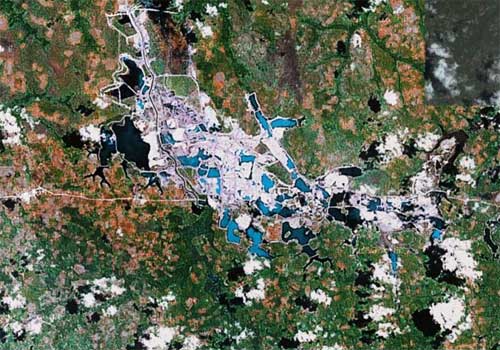
But the devastation did not stop there. The closing of the large smelters, together with the financial crisis of 1997 left islanders impoverished. Meanwhile the electronics industry began replacing lead in solder with tin-based alloys, which together with the growth of the industry in general placed great demand on the versatile metal. The price of tin has multiplied in past years, providing the incentive for a large number of Bangka islanders (descendants of Chinese laborers imported to the island to mine its tin in the 19th Century) to extract and smelt the metal individually and against the law.
The more we look into the electronics industry, we expect to find missing links. But for solder – the basic conductor for all electronic circuits – to be largely unregulated, mined by outlaw individuals at great environmental cost without regulation or traceability means that the very foundation of the digital revolution is in human and environmental destruction.
shill pill
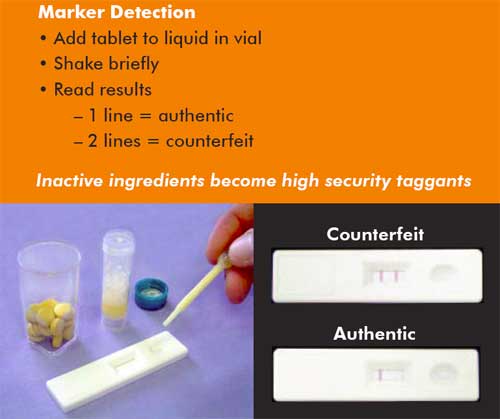
Counterfeit medicine will amount to a $75 billion market in 2010, leaving death and disease in their wake, but it’s unclear whether Authentix‘s system for verifying pharmaceuticals are genuine is the right direction. Their method works by adding a chemical with a distinctive signature to the inactive ingredients – so that the suspect medication can be tested and results obtained in “24-36 hours” in a pregnancy-test-style color-changing strip. On the other hand, you could develop an innovative preferred buyer program where the consumer’s fluids are tested for the tracer materials to earn valuable rewards.
designers = form-givers
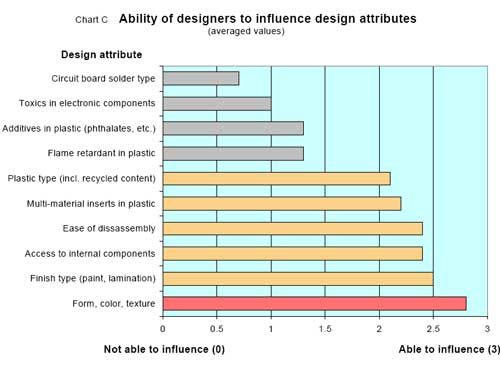
The IDSA provides a suite of readings on ecodesign, including this 2003 survey on the ecological performance of electronic products (pdf), in which a survey of product designers sought to reveal the mechanisms for indluencing sustainable design in consumer electronics. This bar chart struck my eye because it represents exactly what needs to change in the way designers think of themselves and the way their managers think of them too. Electronics design concerned itself entirely with appearance, and more recently with function (usability), but neither consumers nor designers nor manufacturers have made a big deal out of the toxics in electronics, their short lives or their vast environmental and social impact. Making things pretty is easy enough, but making products sustainable – and making managers and consumers care about sustainability – these are the real challenges for designers today. The graph is already five years old; let’s hope that in another five years it will be completely reversed.
farm map

We all know that eating local is not only more efficient, but also more delicious – unfortunately it can be hard to find the variety of foods we eat without resorting to a large supermarket. LocalHarvest is a web resource for finding local farms and farmers markets, including a map of all the farms and markets in the US (above) and an on-line store that gives you the ability to order any kind of food from a specific farm, locally or nationally. While it’s still more effort than stopping by your local Whole Foods, this kind of information resource is starting to close the gap between small producers and consumers and could one day make it possible eat fresh food once again.

